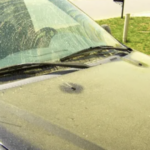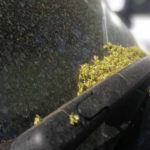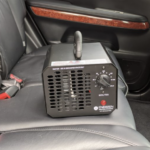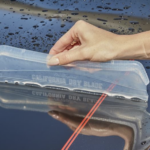Top 5 Mistakes That Cause Swirl Marks and How to Avoid Them
Top 5 Mistakes That Cause Swirl Marks and How to Avoid Them
When it comes to car detailing, maintaining a flawless finish is the goal for many car enthusiasts. However, despite the best efforts, swirl marks can appear and mar the glossy, smooth surface of your vehicle. Swirl marks are fine scratches that often look like circular patterns and are typically caused by improper cleaning and maintenance techniques. These unsightly blemishes can be frustrating to deal with, especially if you’ve put in the time and effort to detail your car.
In this article, we’ll highlight the top 5 mistakes that cause swirl marks and provide helpful tips on how to avoid them, so you can keep your car looking pristine.
1. Using Dirty or Contaminated Towels
One of the most common mistakes that leads to swirl marks is using dirty or contaminated towels during the detailing process. Towels that are not clean can carry dust, dirt, and other debris, which will scratch the surface of your car while you’re drying it or wiping it down. This is especially problematic when the towel is used for buffing or polishing the paint.
How to Avoid It:
- Always use microfiber towels, which are designed to be soft and gentle on paint.
- Wash your towels regularly and ensure they are free from any grit or contaminants.
- Use separate towels for different tasks. For example, use one towel for drying and another for buffing.
- Consider using a towel cleaner to maintain your microfiber towels in top condition.
2. Improper Washing Technique
A common mistake that leads to swirl marks is using the wrong washing technique. Many people make the error of scrubbing their car too harshly or washing it in a manner that drags dirt across the paint. This can cause micro-scratches that form into swirl marks over time. Additionally, using dish soap or other harsh cleaners can strip away protective layers of wax, leaving the paint vulnerable to damage.
How to Avoid It:
- Use the “two-bucket method” when washing your car. One bucket should contain soapy water, and the other should be for rinsing your wash mitt. This will help prevent dirt from being transferred back onto the paint.
- Always use a microfiber wash mitt or soft sponge to gently scrub the car.
- Wash the car from top to bottom, as the dirtiest parts of the car are typically lower down.
- Use a high-quality car shampoo that is specifically formulated to protect the paint’s finish.
3. Using the Wrong Polishing Tools
Polishing tools, if not chosen and used correctly, can cause swirl marks rather than remove them. Improper use of a machine polisher, for example, can lead to uneven pressure and incorrect speed, causing micro-scratches. Moreover, using a polishing pad that is too abrasive for your vehicle’s paint can create new marks, which is counterproductive to the goal of removing imperfections.
How to Avoid It:
- Always choose the right polishing pad for the job. Opt for a pad with a soft, medium, or fine abrasive depending on the paint condition.
- If you’re using a machine polisher, make sure you’re familiar with how to use it properly. Keep the pad moving in a consistent pattern and apply light, even pressure.
- Test any new polisher or pad on a small, inconspicuous area to ensure it doesn’t cause scratches.
- If you’re unsure about using a machine polisher, consider hand polishing or hiring a professional detailer for more complex jobs.
4. Drying the Car with a Rough Cloth or Chamois
After washing, drying the car is an essential part of the detailing process. However, using rough cloths or old chamois to dry your car can cause friction and drag debris across the paint, leading to swirl marks. Chamois, especially if not maintained properly, can also accumulate dust and dirt that can cause further scratches.
How to Avoid It:
- Use a microfiber drying towel, which is highly absorbent and much gentler on the paint than traditional cloths or chamois.
- Try a “blow dry” technique using a leaf blower or a car-specific drying air blower to remove excess water from the surface before towel drying.
- Always dry the car in straight lines rather than using a circular motion, which can encourage swirl marks.
- Avoid drying the car when the paint is still hot, as this can lead to water spots. Instead, wait until the car has cooled down or dry in shaded areas.
5. Not Applying Proper Protection
Even if you’ve taken all the right steps to avoid swirl marks during washing and polishing, neglecting to apply proper protection to your vehicle’s paint can leave it exposed to the elements, increasing the likelihood of future swirl marks. The absence of a protective layer, like wax or sealant, leaves the paint vulnerable to scratches and environmental contaminants that can create swirl marks over time.
How to Avoid It:
- After polishing and cleaning the car, always apply a layer of high-quality wax or paint sealant. This will create a protective barrier that not only prevents swirl marks but also helps to keep your car’s paint looking glossy and smooth.
- Ceramic coatings are another great option for long-term protection. They provide a durable, hydrophobic layer that repels water, dirt, and contaminants.
- Make sure to regularly maintain the protective layer by reapplying wax or sealant every few months, depending on your climate and driving conditions.
Final Thoughts
Swirl marks are a common but preventable issue that can impact the appearance of your car. By avoiding these five common mistakes—such as using dirty towels, improper washing techniques, incorrect polishing tools, rough drying methods, and neglecting protection—you can keep your car looking as good as new. Proper car detailing takes a little time and effort, but the rewards are worth it. With the right techniques and products, you can maintain a flawless finish and enjoy a shiny, swirl-free vehicle for years to come.
By staying mindful of these tips and taking care of your car’s finish, you’ll not only prevent swirl marks but also enhance the overall appearance and longevity of your vehicle. Happy detailing!
Leave a Comment Cancel Comment
Book Orlando Mobile Detailing
Search
Latest Post
-
 The Cost of Neglect: Why Regular Aircraft Detailing Saves Money in the Long Run
February 14, 2025
The Cost of Neglect: Why Regular Aircraft Detailing Saves Money in the Long Run
February 14, 2025
-
 Why Car Washes Aren’t Enough to Combat Pollen Damage
February 13, 2025
Why Car Washes Aren’t Enough to Combat Pollen Damage
February 13, 2025
-
 Orlando’s Pollen Problem: When Is It the Worst and How It Affects Your Car
February 13, 2025
Orlando’s Pollen Problem: When Is It the Worst and How It Affects Your Car
February 13, 2025
-
 How Ozone Generators Eliminate Stubborn Car Odors in Orlando
February 12, 2025
How Ozone Generators Eliminate Stubborn Car Odors in Orlando
February 12, 2025
-
 Why a Water Blade and Chamois Beat Towels Every Time!
February 9, 2025
Why a Water Blade and Chamois Beat Towels Every Time!
February 9, 2025
